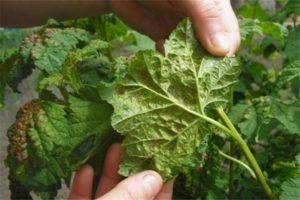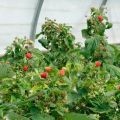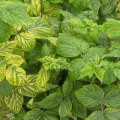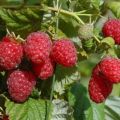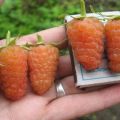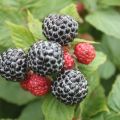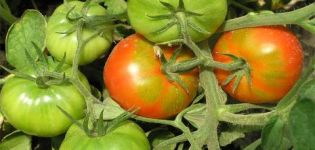Description and technology of growing Joan Jay raspberries
Many gardeners at their summer cottage grow raspberries to enjoy ripe berries in the summer. There are many different raspberry varieties, but Joan Jay is popular among summer residents. Before planting, you must familiarize yourself with the description of the Joan Jay raspberry variety, as well as with the features of its cultivation.
Description and characteristics of the variety Joan Jay
Before planting a raspberry variety Georgia or Joan Jay on the site, you need to familiarize yourself with the description of the main characteristics of the plant.
Drought resistance, frost resistance
The main distinguishing feature of such a raspberry seedling is its resistance to dry weather. The plant develops normally even in sunny weather and temperatures above thirty degrees Celsius. However, Joan Jay endures frosts at times worse. At temperatures below fifteen degrees of frost, plants slow down development and begin to die. Therefore, before winter frosts, raspberry bushes will have to be covered.
Productivity and fruiting
This variety belongs to the type of remontant plants and therefore the fruits are formed on both biennial and annual shoots. Due to this, the yield of seedlings is quite high. If the seedlings are grown correctly, it is possible to collect five kilograms of ripe berries from each bush. Moreover, fruiting begins in the first year after planting seedlings in the garden.
Scope of fruits
Many people who plan to grow raspberries in the future are interested in how the harvested berries can be used. Most often they are used in cooking for making desserts. Housewives use ripe berries to prepare fruit jam for the winter. They are also suitable for making stewed fruit.
It is not necessary to cook anything from ripe raspberries, as they can be eaten raw.
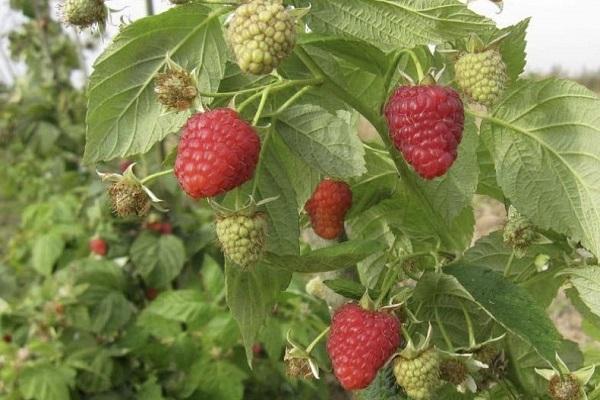
Disease and pest resistance
Joan Jay belongs to the raspberry varieties that are resistant to many pests and diseases. However, despite this, the seedlings can still get sick. The onset and development of the disease can be triggered by high levels of humidity or frequent rainfall. To prevent the development of ailments, it is necessary to periodically weed the area where raspberry berries are grown.
Pros and cons of raspberries
Joan Jay has a number of advantages and disadvantages that you need to familiarize yourself with before planting on the site.
Among the advantages of the variety, the following are distinguished:
- large size of berries;
- fragrant smell;
- long fruiting period, which lasts three months;
- resistance to dry weather;
- high level of productivity;
- compactness of bushes;
- ease of care.
The disadvantages of such raspberry seedlings include:
- fragility of branches with fruits;
- high consumption of nutrients from the soil;
- poor frost resistance.
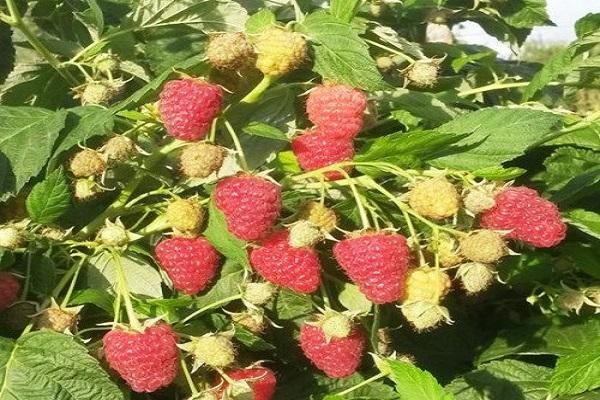
The nuances of growing
There are several nuances of growing that you need to familiarize yourself with before you start planting raspberries.
Recommended timing
First, you need to decide on the exact timing of planting seedlings in the garden. Experienced gardeners recommend doing this in the spring when the winter frost ends. Most often, raspberry bushes are planted in mid or late April.
However, if the frost drags on, planting work is postponed to the first half of May.
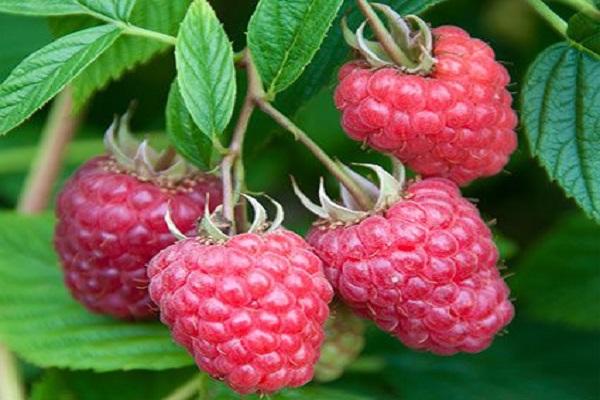
Choosing a suitable site
The selected area for growing raspberry seedlings must meet the following characteristics:
- good sunlight during the day;
- reliable protection against strong wind gusts that can break branches;
- water stagnates on the site;
- no tomatoes, potatoes or strawberries were grown in the selected location before the raspberries were planted.
Selection and preparation of planting material
For planting in the garden, shoots with a length of about twenty centimeters are selected. In this case, the diameter should not be less than ten millimeters. Selected seedlings must be prepared in advance for further planting. Their roots are dipped in a container filled with water for 2-3 days. Then the soaked roots are treated with an agent to strengthen and stimulate the development of the root system.
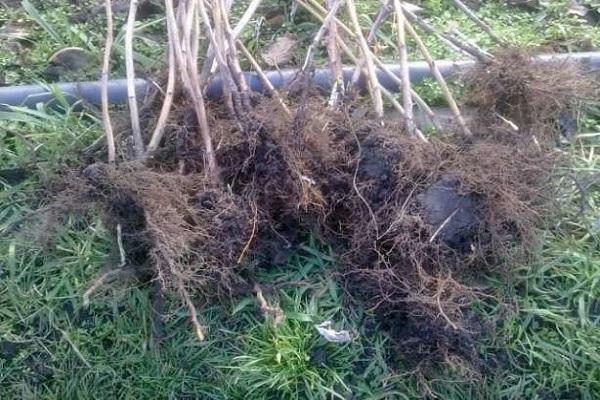
Planting process
Planting raspberries is carried out in several stages:
- Creation of a landing pit. A pit 40 centimeters in width and depth is being dug on the site.
- Adding dressings. Superphosphate with humus and potassium dressings is added to the dug planting pit. Then the fertilizers are thoroughly mixed with the soil.
- Planting. Having prepared a hole, raspberry seedlings are carefully planted in it.
Raspberry care tips
In order for raspberry seedlings to bear fruit well, they will have to be properly looked after.
Watering
Joan Jay is considered a drought tolerant variety, and therefore some believe it should be rarely watered. However, without enough moisture, the development of the bushes and the ripening of the berries will be slow. Therefore, it is recommended to wet the soil once a week. At the same time, 8-10 liters of water is poured under each seedling.
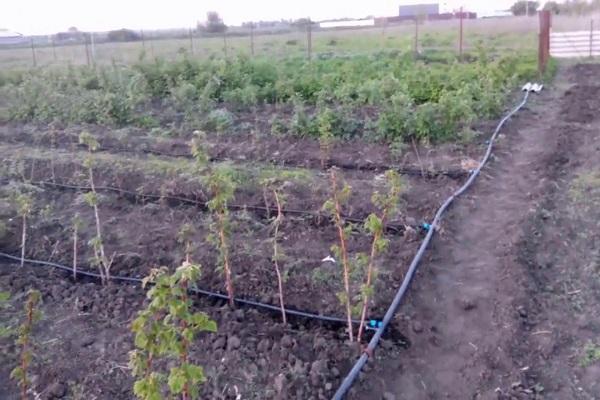
Pruning
Pruning is considered the most important factor in caring for raspberry bushes. Shortening Joan Jay must be practiced at least twice a season. The first preventive pruning is done in the spring. During this period, weak and frozen shoots are cut. In autumn, stems that have ceased to bear fruit are cut.
Top dressing
During the growing season, it is necessary to fertilize raspberries. Experts recommend adding more liquid manure, as plants respond well to it. Also, to increase the yield, a feed mixture from chicken manure is added.
Preparation for wintering
Before the onset of winter frosts, pruning is carried out, during which weak shoots are removed. Then you need to cover the seedlings to protect them from frost. For this, dry tree branches and fallen leaves are spread on the surface of the soil.
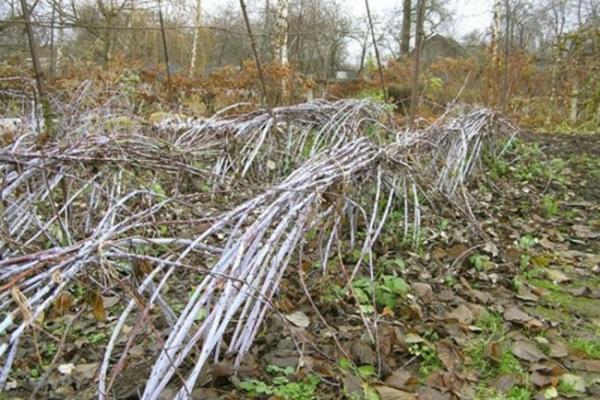
Disease and pest control
It is no secret that during cultivation, raspberry seedlings can be attacked by pests or get sick.To protect the bushes, you must periodically spray them with fungicides. Such treatments are carried out in the evening so that there is no sun.
Reproduction methods
There are several ways to breed raspberries:
- With roots. This method is used in the spring. The plant is dug up, after which the best roots are selected from its root system. They are germinated and planted in a new place.
- Division of the bush. If the variety produces few root suckers, it is propagated in this way. The shrub is divided into two parts, each of which should consist of 2-4 young shoots.
- Cuttings. For planting, shoots are taken that remain after pruning. They are germinated and planted in the ground.
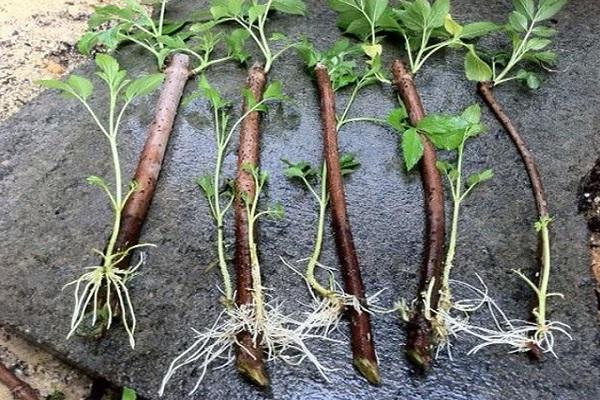
Harvesting and storage rules
Raspberry picking is practiced from late July to the first half of October. The collected berries must be stored in a cool place where the temperature does not exceed 5-10 degrees Celsius. At higher temperatures, they quickly deteriorate.
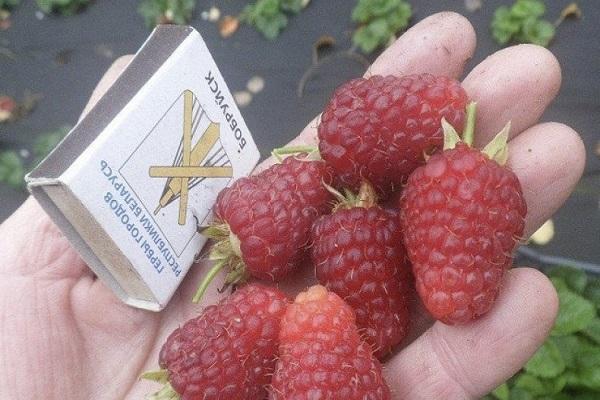
Conclusion
Joan Jay is considered a popular variety of raspberries. Before planting such seedlings, you need to understand their distinctive characteristics and growing characteristics.

